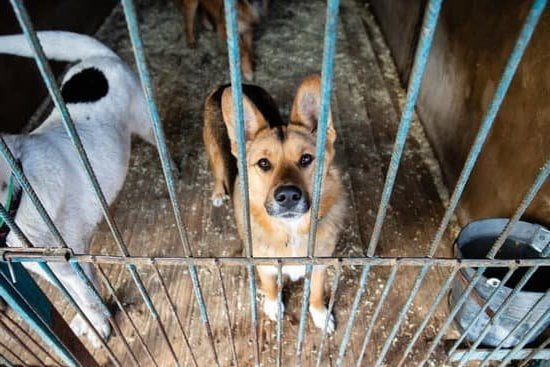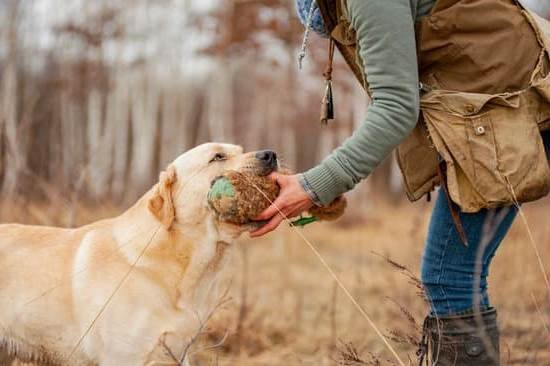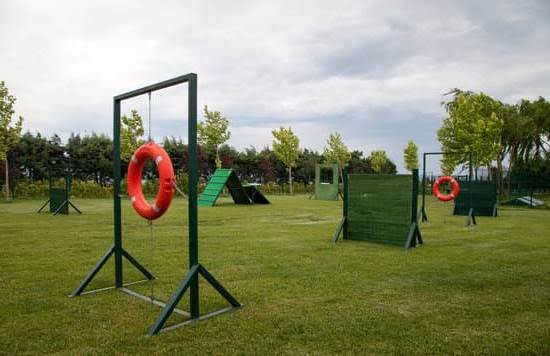When should a dog be fully house trained? House training is a crucial aspect of owning a dog, and it requires time, patience, and consistency. Understanding the process of house training is essential for pet owners to establish successful and lasting habits in their furry companions.
Factors such as age, breed, and individual behavior can affect the timeframe for fully house training a dog. In this article, we will delve into the different aspects of house training and provide valuable insights on how to recognize when your dog is fully house trained.
House training is more than just teaching your dog where to go potty. It involves establishing a routine, understanding your dog’s behaviors, and recognizing signs of progress.
The amount of time it takes to fully house train a dog can vary depending on several factors. These can include the dog’s age, prior living conditions (if adopted from a shelter), breed tendencies, and individual personality traits. By understanding these influences, pet owners can better manage their expectations and approach the training process effectively.
Understanding the House Training Process
House training a dog is a crucial step in ensuring they can live comfortably in a human home. Understanding the house training process is essential for pet owners to successfully train their dogs to do their business in the appropriate place.
Establishing a Routine
One of the key components of the house training process is establishing a routine for your dog. This means taking them out at regular intervals, such as first thing in the morning, after meals, before bedtime, and so on. By creating a consistent schedule, your dog will begin to understand when and where they should go potty.
Positive Reinforcement
Using positive reinforcement is another important aspect of house training. When your dog goes to the bathroom outside where they’re supposed to, be sure to praise and reward them. Positive reinforcement helps them understand what behavior is expected from them, making it more likely that they’ll continue doing it.
Patience and Consistency
It’s essential for pet owners to have patience and remain consistent during the house training process. Dogs may not learn overnight, and accidents are bound to happen initially. Remaining patient and consistent with their training will help your dog understand what’s expected of them and facilitate successful house training.
Factors Affecting House Training Timeframe
House training a dog can be a challenging process, and the timeframe for successful training can vary depending on several factors. Understanding these factors can help pet owners have realistic expectations and be patient as they work with their furry companions to achieve successful house training. Some of the key factors affecting the timeframe for house training include:
- Age of the Dog: Puppies have smaller bladders and less control over their bodily functions, so they may take longer to house train than adult dogs.
- Breed of the Dog: Certain breeds are known to be more stubborn or independent, which can make house training a bit more challenging and time-consuming.
- Consistency in Training: The dedication and consistency of the owner in implementing a house training routine play a significant role in how quickly a dog becomes fully trained.
- Previous Environment: Dogs that have been raised in a shelter or kennel may initially struggle with adapting to a home environment and learning proper elimination habits.
Understanding these factors can aid pet owners in setting realistic expectations about their dog’s house training progress. It’s important to remember that each dog is unique, so there is no one-size-fits-all timeline for successful house training. By taking into account these factors, pet owners can better gauge how long the process may take for their specific dog.
Signs That Your Dog Is Fully House Trained
House training a dog is an essential part of pet ownership, and it requires time, patience, and consistency. As a dog owner, it’s important to understand the signs that indicate your furry friend is fully house trained.
1. Consistent Bathroom Habits: One of the primary signs that your dog is fully house trained is their consistent bathroom habits. They will consistently go potty outside or in a designated area, and accidents inside the house become rare or non-existent.
2. No Destructive Behavior: A fully house trained dog will not engage in destructive behavior inside the house, especially when left alone. They will understand boundaries and know how to occupy themselves without causing damage.
3. Communicating Their Needs: When dogs are fully house trained, they have learned to communicate their needs effectively. Whether it’s through whining at the door or coming to you when they need to go outside, a well-trained dog knows how to let you know when nature calls.
It’s important for dog owners to remember that every dog learns at its own pace, and complete house training may take longer for some dogs than others. However, recognizing these signs can give you confidence that your furry companion has mastered the art of being well-behaved indoors.
Common Mistakes in House Training
House training a dog can be a challenging process, and there are several common mistakes that pet owners make that can hinder the progress of the training. One of the most common mistakes is punishing your dog for accidents. It’s important to remember that house training takes time and patience, and punishment will only confuse and frighten your dog. Instead, focus on positive reinforcement when your dog goes to the bathroom outside.
Another mistake is not being consistent with the training schedule. Dogs thrive on routine, so it’s important to take them outside at the same times every day, especially after eating, drinking, sleeping, or playing. Inconsistency can lead to confusion for your pet and make the house training process much longer than necessary.
Finally, some pet owners make the mistake of not thoroughly cleaning up accidents. If your dog has an accident inside the house, it’s crucial to clean up the area with an enzymatic cleaner specifically designed for pet messes. Regular household cleaners may not eliminate the scent completely, which could lead your dog to continue using that spot as a bathroom.
| Common Mistake | Impact |
|---|---|
| Punishing accidents | Confusion and fear in dogs |
| Inconsistent schedule | Slow progress in house training |
| Inadequate cleaning of accidents | Repeated accidents in same spot |
Tips for Successful House Training
House training a dog can be a challenging process, but with the right techniques and consistency, it can be successful. Here are some tips for successful house training that every pet owner should consider:
First and foremost, establish a routine for your dog. This includes regular feeding times, potty breaks, and playtime. Dogs thrive on routine, and having a set schedule will help them understand when it’s time to go outside to relieve themselves.
Consistency is key when it comes to house training. Use the same door to take your dog outside every time, use the same spot in the yard for them to do their business, and use the same command each time they go. This will help reinforce the behavior you want from them.
Positive reinforcement is another important aspect of successful house training. When your dog goes potty outside, give them lots of praise and maybe even a tasty treat. This will help them associate going outside with good things, encouraging them to continue the behavior.
By following these tips for successful house training, you’ll be setting your dog up for success and making the process as smooth as possible for both you and your furry friend. With patience, consistency, and positive reinforcement, you can have a fully house trained dog in no time.
Age Milestones for House Training
House training a dog can be a challenging process, but understanding the age milestones for house training can help owners set realistic expectations and monitor their pet’s progress. Different stages of a dog’s development will impact their ability to be fully house trained, and recognizing these milestones can be beneficial for both the owner and the dog.
Early Puppyhood
During early puppyhood, typically between 8-16 weeks of age, dogs are still developing physically and cognitively. At this stage, puppies have limited bladder control and may not yet understand the concept of holding it in or signaling the need to go outside. It is important for owners to be patient during this time as accidents are bound to happen.
Adolescence
As puppies reach adolescence, around 4-6 months of age, they begin to gain better control over their bladder and bowel movements. With consistent training and a solid routine, many dogs will start to show signs of understanding where they should go to relieve themselves. However, regression may occur during this stage as well due to hormonal changes and increased levels of independence.
Adulthood
By the time a dog reaches adulthood, around 1 year of age or older depending on the breed, they should generally have mastered house training. Adult dogs have better bladder control and are more adept at holding it in until they are taken outside. However, some dogs may take longer than others to reach this milestone due to factors such as breed differences, health issues, or previous living conditions.
Understanding these age milestones can help owners gauge their dog’s progress in house training and adjust their approach accordingly. Patience, consistency, and positive reinforcement are key elements in successfully reaching this milestone with your furry companion.
Dealing With Regression in House Training
After successfully house training your dog, it can be discouraging to see them start having accidents in the house again. This regression can be caused by a variety of factors, but it is important to address it promptly in order to get your pet back on track with their potty habits.
One common cause of regression in house training is a medical issue. If your dog suddenly starts having accidents after being fully trained, it may be wise to take them to the veterinarian for a checkup. Urinary tract infections or other health problems could be causing the behavior change, and ruling out any medical issues should be the first step in addressing regression.
Another factor that can contribute to regression in house training is changes in routine or environment. Dogs thrive on routine, so major changes such as moving to a new home, changes in work schedules, or even rearranging furniture can throw off their bathroom habits. It’s important to help your dog adjust to any new circumstances and reinforce their training during these times of change.
Finally, stress or anxiety can also lead to regression in house training. Just like humans, dogs can experience anxiety and this can manifest as bathroom accidents even if they were previously well-trained. Providing comfort and stability for your pet and addressing any sources of anxiety can help them get back on track with their potty habits.
| Causes of Regression | Solutions |
|---|---|
| Medical Issues | Consult a vet for checkup |
| Changes in Routine/Environment | Reinforce training during changes |
| Anxiety/Stress | Provide comfort and address sources of anxiety |
Conclusion and Recap of Key Points
In conclusion, house training a dog is a process that requires patience, consistency, and understanding of the dog’s behavior. It is important to remember that every dog is different and will progress at their own pace when it comes to being fully house trained.
Factors such as breed, age, previous living conditions, and health can all affect the timeframe for house training. It is essential for pet owners to be aware of the signs that indicate their dog is fully house trained and to avoid common mistakes that may hinder the process.
One key aspect of successful house training is to provide positive reinforcement when the dog exhibits desired behavior. This can include verbal praise, treats, or affectionate gestures that show the dog they have done well. Consistency in routine and establishing clear boundaries are also crucial in helping the dog understand what is expected of them in terms of eliminating waste in appropriate areas.
It is important for pet owners to educate themselves on age milestones for house training and how to address any regression in behavior that may occur. By understanding these key points and being committed to the process, pet owners can successfully achieve full house training for their dogs, resulting in a harmonious living environment for both the pet and its human companions.
Frequently Asked Questions
At What Age Should a Dog Be House Trained?
House training a dog typically begins around 12-16 weeks of age, when they have enough control over their bladder and bowel movements to start learning where it’s appropriate to go potty. However, the exact age at which a dog should be house trained can vary depending on the breed, individual personality, and health of the dog.
How Do You Know When Your Dog Is Fully House Trained?
You’ll know your dog is fully house trained when they consistently go potty outside or in a designated area, have stopped having accidents indoors, and show signs of understanding and following your cues or schedule for potty breaks. This usually takes several months of consistent training and reinforcement.
Will My Dog Ever Be Fully Potty Trained?
While most dogs can be fully potty trained with consistent effort from their owners, there are some cases where a dog may never be fully reliable due to underlying health issues or behavioral problems. However, with patience, proper training, and possibly the help of a professional trainer or veterinarian, many dogs can eventually become fully potty trained.

Welcome to the blog! I am a professional dog trainer and have been working with dogs for many years. In this blog, I will be discussing various topics related to dog training, including tips, tricks, and advice. I hope you find this information helpful and informative. Thanks for reading!





